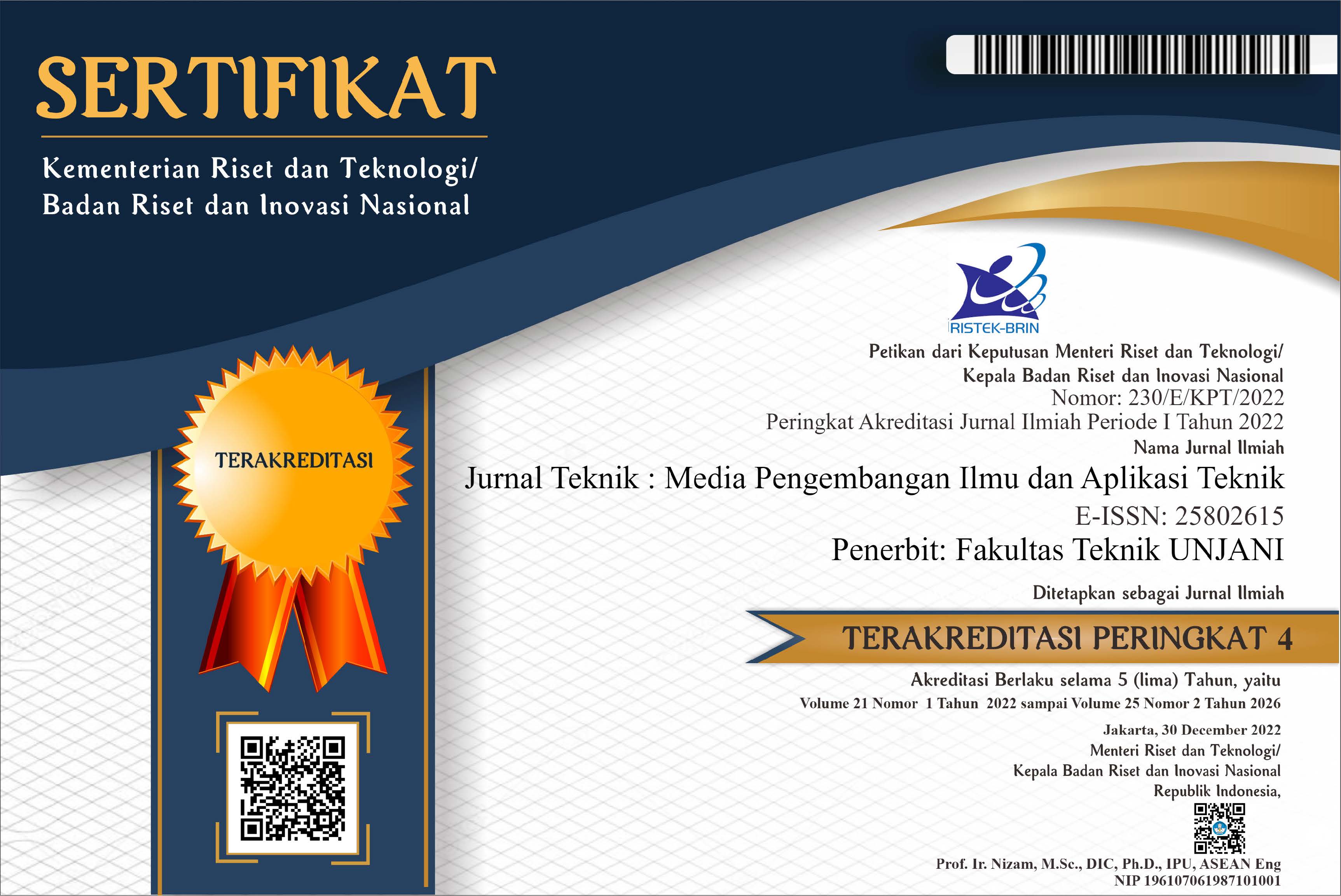Penerapan Metode Six Sigma pada IKM Manufaktur Industri Pendukung (Supporting Industry) untuk Meminimalkan Jumlah Produk Cacat
DOI:
https://doi.org/10.26874/jt.vol20no2.208Keywords:
Cooling Time, DMAIC, Holding Pressure, supporting industry, Six SigmaAbstract
Supporting industry is industries that make goods and services, sell to the free market, or to other industries to support their final products with greater value. With characteristics being business to business, the efficiency of the production process is the key. An efficient production process can minimize defects so that production costs can be minimized. This research is an application of the six sigma method in supporting industries that produce educational aids. Was conducted in a company with a defect rate of up to 8,10%, named combination mirror products with a sigma value is 3,71. Process improvement by implementing the DMAIC (Define-Measure-Analyze-Improve-Control). At the define stage, the dominant defect is the Shrink Mark defect, which is 31% of all types of product defects. The cause of defect is the absence of parameter setting values ​​that are used consistently on the injection molding machine. Through experiments, this research determines the parameter setting values ​​that can minimize shrink mark type defects. The selected parameter setting factors are Cooling Time and Holding Pressure with a value of 20 seconds and Holding Pressure of 105 MPa. The reject rate of the combination mirror product was successfully minimized and the sigma value increased to 4.13.
Downloads
References
A.C. Scheller, T.T.S. Zomer, P.A.C. Miguel. (2017). Lean Six Sigma in developing countries: evidence from a large Brazilian manufacturing firm. International Journal of Lean Six Sigma Vol. 12 No. 1, 2021 pp. 3-22 © Emerald Publishing Limited 2040-4166 DOI 10.1108/IJLSS-09-2016-0047.
Ballman, R., & Shusman, T. (1959). Easy way to calculate injection molding set-up time. Modern Plastic.
Dakshinamoorthi, M., Ghazaly, N., Vidhya, R. (2014). Minimization of Sink Mark Defects In Injection Molding Process – Taguchi approach. International Journal of Engineering, Science and Technology, 2.
Departemen Perindustrian dan Perdagangan RI. (2003). Rencana Induk Pengembangan Industri Kecil Menengah 2002-2004.
Jiju Antony, Maneesh Kumar, Christian N. Madu, (2005),"Six sigma in small- and medium-sized UK manufacturing enterprises: Some empirical observations", International Journal of Quality & Reliability Management, Vol. 22 Iss: 8 pp. 860 - 874
Kandil, O., R.A.E. Aziz. (2017). Evaluating the supply chain information flow in Egyptian SMEs using Six Sigma : A case study. International Journal of Lean Six Sigma Vol. 12 No. 1, 2021 pp. 120-148 © Emerald Publishing Limited 2040-4166 DOI 10.1108/IJLSS-10-2016-0066.
Pyzdek, T., Keller, P. A. (2010). The Six Sigma Handbook. Mc Graw Hill.
Snee, R.D. (2004), “Six sigma: the evolution of 100 years of business improvement methodologyâ€, International Journal of Six Sigma and Competitive Advantage, Vol. 1 No. 1, pp. 4-20.
V. Swarnakar., A.K. Tiwari., A.R. Singh. (2020). Evaluating critical failure factors for implementing sustainable lean six sigma framework in manufacturing organization : A case experience. International Journal of Lean Six Sigma Vol. 11 No. 6, 2020 pp. 1069-1104 © Emerald Publishing Limited 2040-4166 . DOI 10.1108/IJLSS-05-2019-0050.
Additional Files
Published
How to Cite
Issue
Section
License
Copyright (c) 2021 Cucu Wahyudin, Agung Apriliandi

This work is licensed under a Creative Commons Attribution-NonCommercial-ShareAlike 4.0 International License.
Penulis yang menyerahkan artikel di Jurnal Teknik: Media Pengembangan dan Aplikasi Teknik untuk keperluan publikasi telah mengetahui bahwa Jurnal Teknik: Media Pengembangan dan Aplikasi Teknik memberikan akses terbuka terhadap konten untuk mendukung pertukaran informasi mengenai ilmu pengetahuan, sesuai dengan penerbitan daring yang berbasis Open Access Journal dan mengikuti Creative Commons Attribution 4.0 International License. Sehingga penulis setuju dengan ketentuan-ketentuan berikut:
1. Penulis memegang hak cipta dan memberikan hak publikasi pertama kepada pihak jurnal dengan pekerjaan secara bersamaan
di bawah Creative Commons Attribution 4.0 International License yang memungkinkan orang lain untuk berbagi pekerjaan
dengan pengakuan kepengarangan karya dan publikasi pertama artikel tersebut di Jurnal Teknik: Media Pengembangan dan
Aplikasi Teknik.
2. Penulis dapat melakukan perjanjian tambahan untuk hak distribusi non-eksklusif artikel yang telah diterbitkan di jurnal ini
(misalnya, posting ke sebuah repositori institusi atau menerbitkannya dalam sebuah buku), dengan mengakui bahwa
publikasi pertama dilakukan di Jurnal Teknik: Media Pengembangan dan Aplikasi Teknik.
3. Penulis diizinkan dan didorong untuk menyebarkan karya mereka secara daring (misalnya, dalam repositori institusi atau
laman web penulis) setelah artikel terbit (proses penerbitan artikel selesai). Hal ini terkait dengan imbas dari pertukaran
informasi yang produktif (Lihat Pengaruh Open Access).












